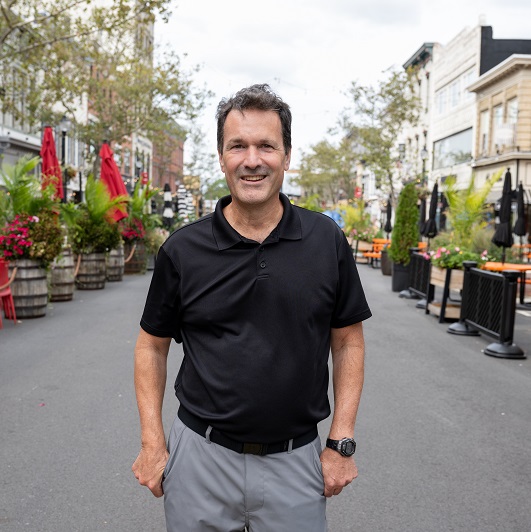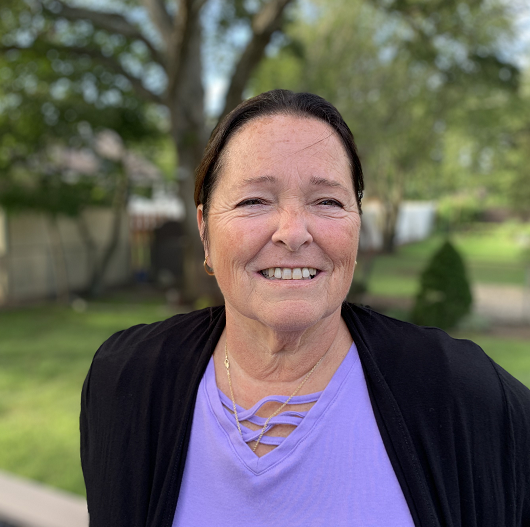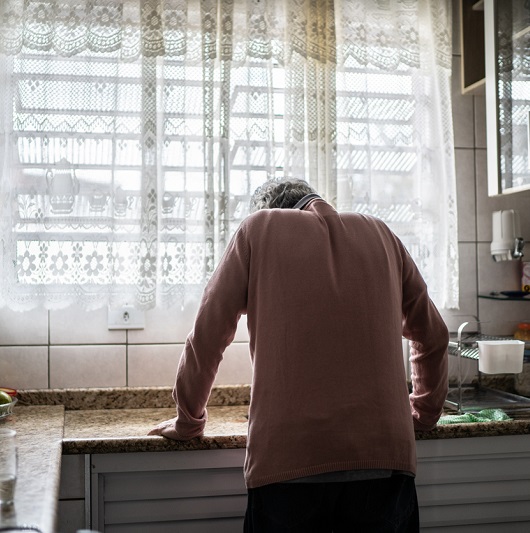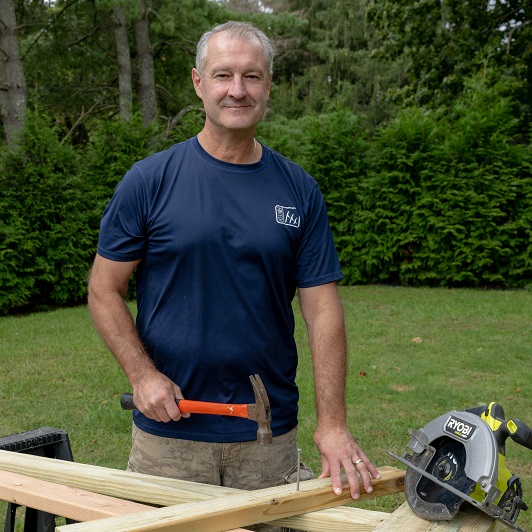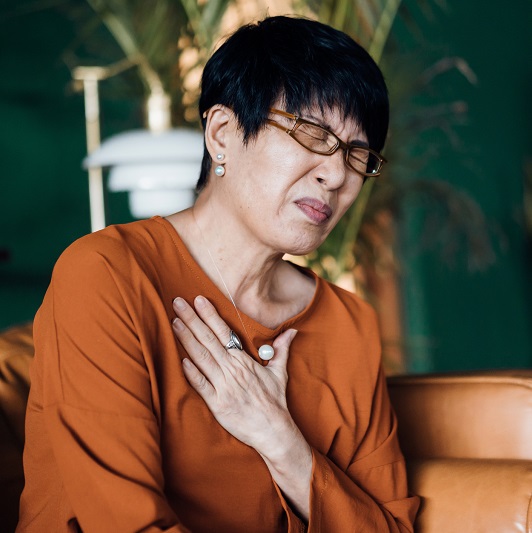Investment in Heart Care Pays off for East Orange Woman
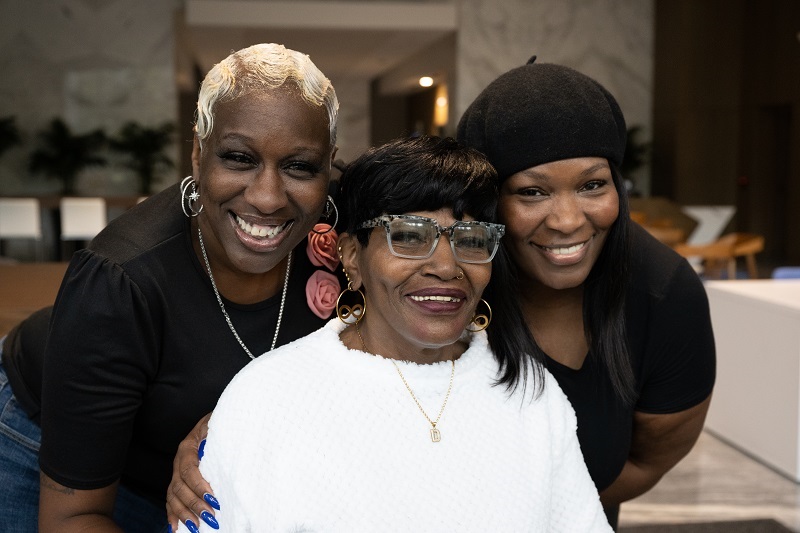
December 11, 2023
Diane Pratt is no stranger to heart care—or to the importance of family. Now 70 years old, she was diagnosed with hypertension (high blood pressure) 30 years ago by her former cardiologist, Rakesh Sahni, M.D.
Fast forward three decades and Dr. Rakesh Sahni’s daughter, interventional cardiologist Sheila Sahni, M.D., is helping Diane regain a quality of life and spend precious time with her own family.
Diane, who is a retired drug and alcohol counselor with a family history of heart disease, began seeing Dr. Sheila Sahni in 2018, when Dr. Rakesh Sahni expanded his practice. She had long lived with chronic kidney problems, which compounded her heart conditions, including high blood pressure, and needed several medications, some needing to be taken four times a day.
Cardiovascular disease is the No. 1 killer of women, causing one in three deaths each year. Black women, in particular, are at high risk. Among black women ages 20 and older, nearly 59% have cardiovascular disease, compared to 45% in all women ages 20 and older, according to the American Heart Association.
So it was critical to Diane and Dr. Sahni to get ahead of Diane’s cardiovascular issues.
“I wanted to optimize Diane’s cardiovascular risk factors,” Dr. Sheila Sahni says. “Controlling her high blood pressure has been challenging due to her chronic kidney problems. When kidneys are injured, blood pressure can rise.”
A Multi-year History of Heart Issues
Starting in 2018, Diane’s shortness of breath when exerting herself and uncontrolled high blood pressure led to nuclear stress testing. It’s an imaging method that shows how well blood flows into the heart muscle, both at rest and during activity, Dr. Sahni says. The test revealed abnormal blood flow in her heart.
Dr. Sahni started antianginal therapy, a medication to reduce angina, which is chest pain or discomfort, often a symptom of heart disease. Diane started the therapy at a lower dose, increasing over time to achieve a specific response or to decrease the risk of adverse effects.
“Despite starting the medication at a lower dose and slowly increasing it, in early 2019, Diane needed to be treated with her first stent, a tiny mesh tube that is inserted to hold open a weak or narrowed artery,” Dr. Sahni says. It’s typically done with a balloon angioplasty procedure, using a small inflated “balloon” to unblock a clogged blood vessel or artery.
Two years later, Diane suffered a condition called non-ST-elevation myocardial infarction (NSTEMI), which is on the spectrum of a heart attack. NSTEMI is recognized by elevated cardiac biomarkers, which are enzymes released into the bloodstream by the heart when it does not receive adequate blood flow.
“At that time, we treated Diane for a very aggressive closure of her previously inserted stent,” Dr. Sahni says, adding that the team also found a major clot in Diane’s right coronary artery. “She had very long blockages in multiple areas of the blood vessel. We were able to regain her blood flow to the vessel and place a new stent, which to this day has done very well.”
But in September 2022, Diane experienced more problems. “I knew something was wrong because I was so tired and got lightheaded periodically,” Diane says.
Dr. Sahni diagnosed tachy-brady syndrome, or sick sinus syndrome, characterized by periods of the heart beating either too slow or too fast. “Diane needed a pacemaker, which she received,” Dr. Sahni says.
Finding Even More Joy After Heart Care
Despite her complicated history, Diane has since been able to significantly reduce her number of daily medications. Dr. Sahni says she is an incredible patient, who has educated herself, writes things down that she needs to know and do and is compliant to the best of her ability.
“I make sure I take my medicine correctly,” Diane says. “I learned that from my brother, who also had heart issues.”
Adds Dr. Sahni: “Diane’s prognosis is very good, and her story is one of truth and triumph—dealing well with what she understood about her condition and helping us foster a great doctor-patient relationship.”
Diane says the improvements in her condition make it possible for her to experience even more joy from her family, with two daughters, five grandchildren and five great-grandchildren.
“One of my granddaughters is my namesake and is a registered nurse who’s preparing to be a doctor,” Diane says. “Having worked with people who faced so many challenges in their lives, I am so grateful to see my family have so many blessings and live such wonderful lives. That’s what really brings me joy.”
Next Steps & Resources:
- Meet our source: Sheila Sahni, M.D.
- To make an appointment with Dr. Sahni or a cardiologist near you, call 800-822-8905 or visit our website.
- Learn more about heart care at Hackensack Meridian Health
- Schedule a heart screening near you.
The material provided through HealthU is intended to be used as general information only and should not replace the advice of your physician. Always consult your physician for individual care.
